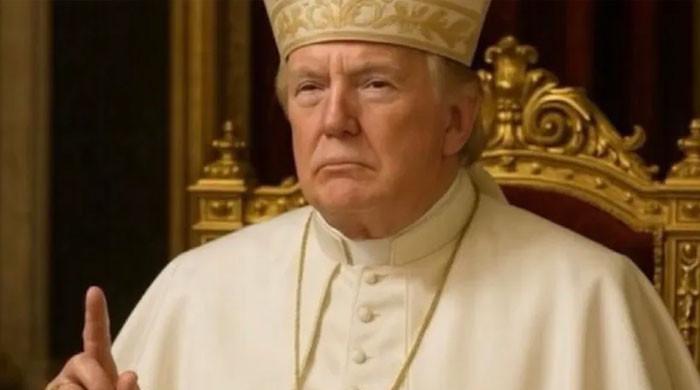Washington: President Donald Trump rejected the counterpoup against an image generated by AI-AI on Monday as the Pope published by the White House on social networks, saying that it was a harmless joke, but communication experts said they had not seen the funny side.
The weekend generated articles from Trump dressed in white papal clothes and another of him brandishing him one of the red light sabers favorite by the bad guys in Star Wars films seemed typical of the provocation that the president employs to energize supporters and Troll critics.
Since his return to the office on January 20, Trump has dominated the information cycles. In a relatively quiet weekend, the two images assured that Trump remained a major conversation subject on social networks and beyond.
Throughout his political career, Trump has adopted daring visuals, installation in a garbage truck to stand outside a church during demonstrations against police brutality. But the experts told Reuters that unlike those rooted in reality, IA images scrambled the facts and fiction in a way that can mislead.
“I think we see a new phenomenon – the merger of social media and the power of AI, organized for political power and narrative domination,” said John Wihbey, director of the AI -Media Strategies Laboratory of Northeastern University in Boston.
“He exploits this unexplored territory,” said Wihbey. “I suspect that politicians around the world will start using a generative and social AI together.”
Trump told journalists on Monday that the image of the Pope had been published as a joke on his social account Truth, which was then republished by the White House on social networks.
“I had nothing to do with that,” said Trump. “It was fair, someone did it in pleasure. It’s good. I have to have fun, right? “
The White House did not answer the questions on whom Trump, Trump’s posts on his social account Truth and who created the two memes.
For many Catholics in the United States, Italy and elsewhere, the image of Trump disguised by representing God on earth was offensive.
The former Italian Prime Minister Matteo Renzi wrote on X: “This is an image that offends believers, insults institutions and shows that the world right leader likes to be a clown.”
The democratic strategist Michael Ceraso considered the publication by the images of the AI by the White House as a deliberate attempt to generate buzz.
“He is the first influencer president,” said Ceraso about Trump, urging Democrats not to get caught in whipped controversies.
Trump, he said, takes his benchmarks of the professional struggle: “You can be the villain or the right guy as long as you get a reaction from the crowd.”
Since become president, Trump has published images generated by the AI of a seaside resort by the sea in Gaza ravaged by war and himself as a king and as a gangster of the Al Capone type.
Upcoming danger
Jennifer Merieca, scholar of presidential rhetoric at Texas A & M University in College Station, Texas, argued that Trump was looking to project images of force at a time when his presidential approval rating is down.
“Trump’s policies are unpopular and his presidency is unpopular,” said Mercieca. “In this context, Trump has created a visual fantasy of himself as a hero, trying to persuade the nation (and the world) that he is actually a hero.”
The most recent Reuters / Ipsos survey obtained the 42% Trump approval rating with 53% of disapproving respondents and showed concerns to the ignition of Americans about his economic and immigration policies. He culminated at 47% in the first days of his presidency.
Wihbey of the Northeast University said that a greater test of AI’s ability to distort political reality would come if Trump is trying to fit into more “photo-realistic” images that suggest historical events and scenes that have not occurred.




